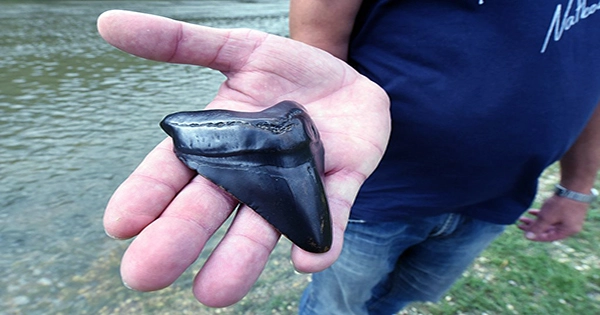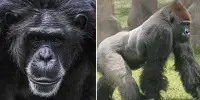Sharks are a favorite with children. Children (and adults!) are fascinated by these monstrous kings of the sea, and no shark is larger, more toothy, or more jawesome than the megalodon. As a result, most children spend many days of their youth scouring beaches for fossilized shark teeth, but if you’re anything like me, you’ll never discover any. You can image how happy six-year-old Sammy Shelton was when he discovered a gigantic megalodon tooth in excellent shape on Bawdsey beach in England. This tooth, which is nearly the size of his entire palm and is 10 centimeters (4 inches) long, belongs to the largest ever species of shark to sail Earth’s waters, and has become a personal treasure of Sammy’s.
Professor Ben Garrod, an evolutionary scientist at the University of East Anglia in Norwich, was contacted to identify the tooth, and he identified it as a megalodon tooth in exceptional condition. According to the BBC, “it belonged to a megalodon, the world’s biggest shark, and its teeth aren’t typically spotted along the UK shoreline.” “There are probably just a few a year, but this is a really fine specimen, in excellent condition, since they are normally pretty worn when discovered.”
The megalodon was a monstrous shark that existed between 23 and 3.6 million years ago, and its name means “Big Tooth” in Greek. The megalodon hunted whales and was likely the apex predator at the period, reaching a remarkable length of nearly 16 meters (52 feet). The megalodon was likely extinct millions of years ago due to a fall in baleen whale distribution, among other factors, and all that remains are huge teeth that illustrate exactly how massive they were. Sammy will now be able to realize almost every child’s (and IFLScience staff’s) fantasy of owning a massive megalodon tooth, which, despite its monetary value of roughly $100 (£80), will mean the world to him.
When you’re the world’s largest shark, you’d think you’d feel quite comfortable taking on anything, but new study shows that the iconic Carcharocles megalodon favored tiny whales to larger prey. According to the authors of a recent study, the megalodon’s love for measly canapés may have contributed to its fate, since these little whales went out approximately 3 million years ago, leaving megalodons without food. The researchers looked at bite marks on fossils recovered off the coast of Peru, where they uncovered the remnants of some now-extinct dwarf whales and seal-like animals with scratches and grazes that matched the megalodon’s teeth exactly.
















